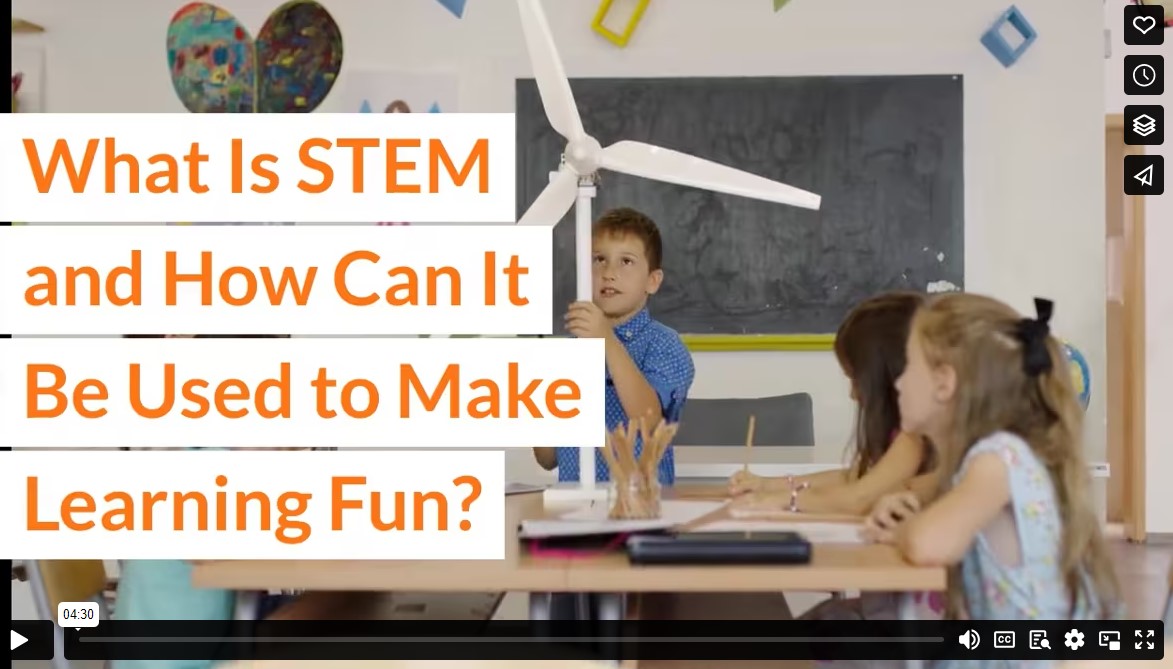Parents of school-aged children have probably heard the term “STEM” tossed around by teachers and students, but what does it mean? The short answer is that it stands for “science, technology, engineering, and math.” Teachers at our Atlanta private school have found that integrating these critical skills into the modern classroom is essential for equipping children to thrive in the workplace of the future. These four areas of focus develop critical thinking, entrepreneurism, and make learning hands-on and fun.
What makes science, technology, engineering, and math so crucial to the future generation?
STEM prepares children for the workplace of the future.
With more and more jobs becoming tech and engineering-based, children will need to enter the workplace with a strong foundation in these areas. Consequently, children who are able to secure such jobs are more likely to experience financial stability, which leads to overall economic growth.
STEM grows critical thinking skills.
STEM-based activities engage a child’s brain and keep the gears moving, building their critical thinking muscles, and teaching them how to problem solve.
STEM develops richer vocabulary and language skills.
Science, technology, engineering, and math each come with a unique set of vocabulary. Children who learn and are able to integrate STEM-based language into their word-bank will find it easier to catch onto more advanced topics and equations in the future. These skills also teach children how to communicate in an academic fashion, which will come in handy once they reach high school and college.
STEM promotes entrepreneurism.
Building these skills in children encourages them to originate and develop new ideas. Many of today’s most innovative companies and products were created by individuals who excelled in STEM-related areas. The sooner children can learn and use these skills, the better equipped they will be to take up the torch of innovation and contribute to future advancements.
STEM helps children excel in core subjects.
While it might go without saying that STEM-based activities will aid a child as they study math and science, these skills also engage the child’s mind in a way that helps them better understand each subject they encounter, from English to music, social studies to history.
STEM makes learning fun.
Because of the wide variety of methods used to teach STEM subjects, children will find that learning doesn’t just come from reading textbooks. The hands-on opportunities to grow these skills will appeal to every kind of learner, keeping children invested and actively engaged in their education.
STEM skills are critical skills.
But how can parents and teachers integrate science, technology, engineering, and math into a child’s everyday life in a fun and engaging way? Our Georgia private school teachers have found various hands-on methods to help develop these four skill areas, which students have come to enjoy and even look forward to.
Building Activities
Providing children with blocks, tracks, marble ramps, and other building materials is a great way to connect their minds to their hands, building practical thinking and problem-solving abilities. Loose items and materials are also necessary for STEM-based learning. Try giving your child access to the following:
- Scrap paper
- Glue
- Colored masking tape
- Child scissors
- Coloring supplies (crayons, markers, paints)
- Fabric
- Empty containers and boxes
- Paper towel/toilet paper rolls
Shapes
Helping children identify shapes is foundational to the aptitude required to succeed in math and engineering. Try giving them various objects that fit into each shape category, and encourage them to point out the shapes they notice daily.
Explorative Play
When it comes to STEM, both structured and unstructured play are critical for a well-rounded education. Though some activities should be done with a set of instructions for the student to follow, it is equally important to give children plenty of opportunities to explore. Give them a tub of Legos or some time outside, take a step back, and see what they come up with.
Open-Ended Questions
When engaging with children in STEM activities, ask plenty of open-ended questions. These could include, “What do you think will happen if you ____?” or “How could you make _____ happen?” These questions will go a long way in boosting a child’s critical thinking and communication skills.
Collaborative Play
While children must learn to think and solve problems for themselves, it is also important that they learn to work well and communicate with others, building and expanding on one another’s ideas. Collaborative play and group projects allow children to develop teamwork skills that will be invaluable as they transition from school to the workplace.
Final Thoughts
Developing STEM skills is critical for children to succeed in the classroom, the workplace, and beyond. Teachers and parents can give children the tools they need to develop their minds in these areas by intentionally integrating these methods and activities into a child’s everyday routine.
Video

Infographic
STEM activities develop critical thinking for technical jobs, boosting employability and economic growth. Integrating STEM involves hands-on activities like building and exploring shapes to develop crucial skills for success in school and beyond. Check out the infographic for more details.

